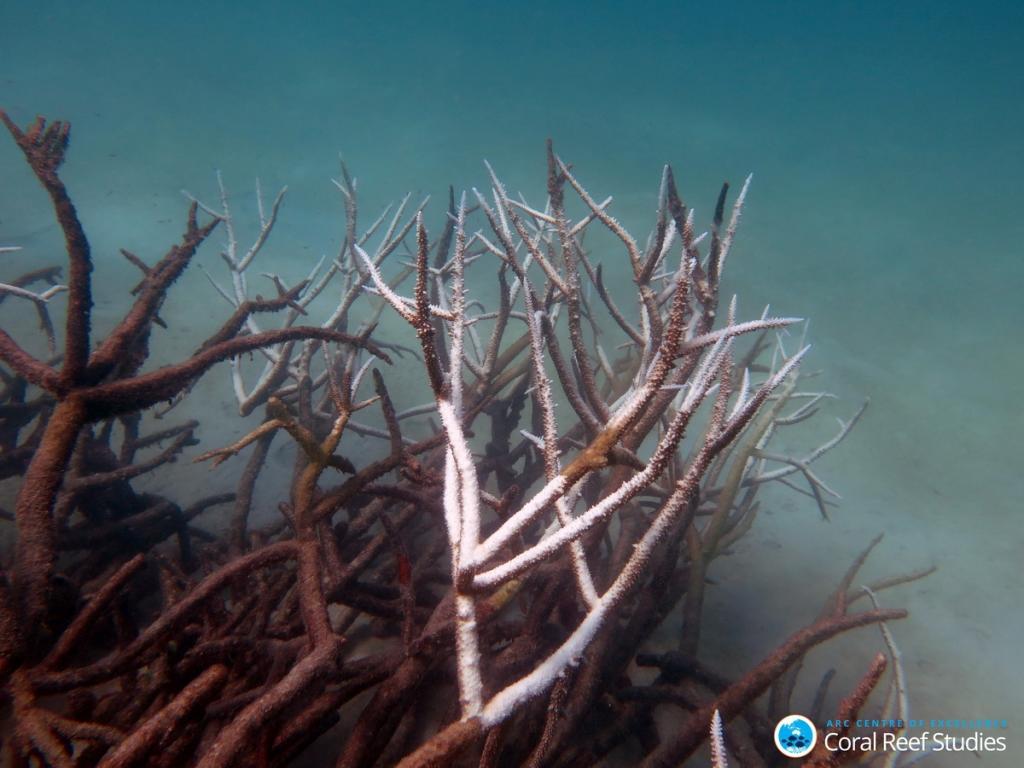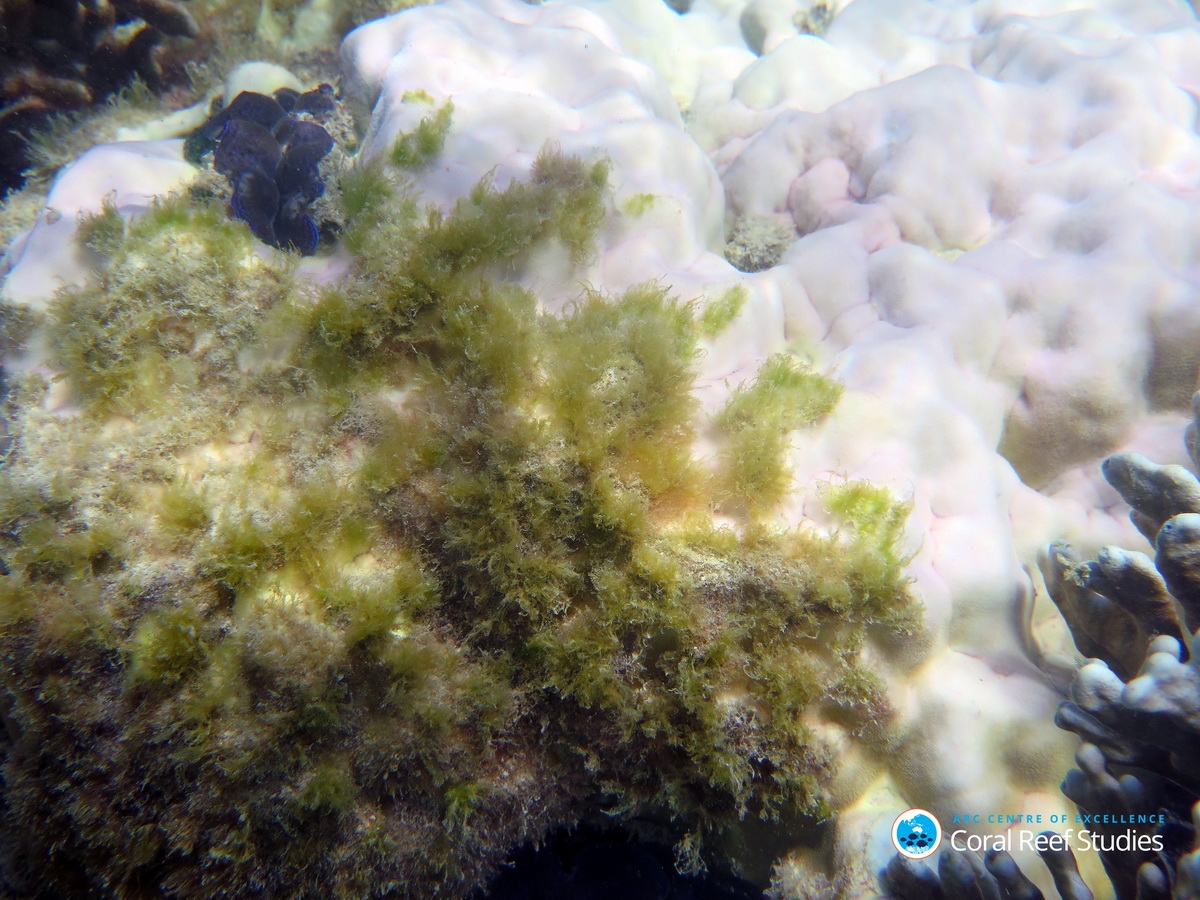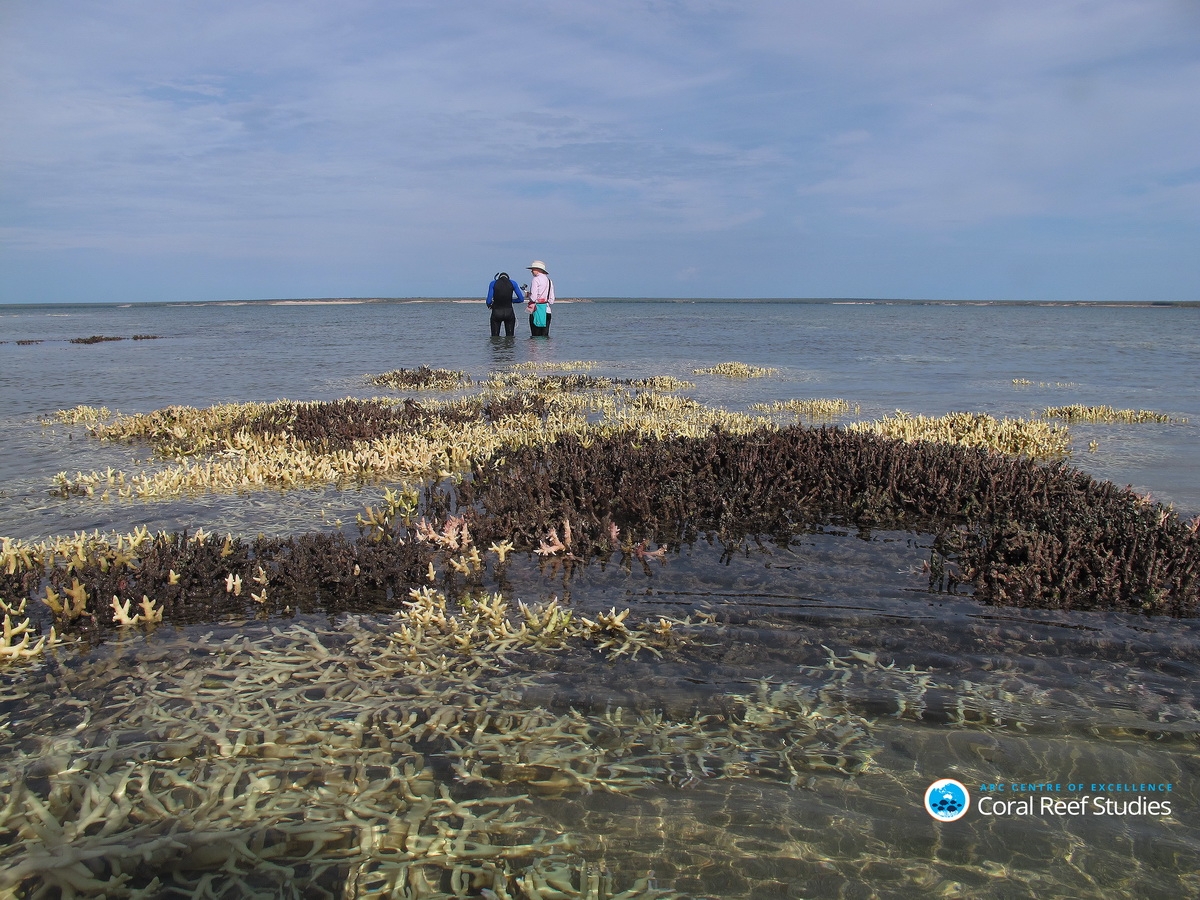
© Dead and dying staghorn coral, central Great Barrier Reef in May 2016. (c) Johanna Leonhardt

© Dying coral colonised by seaweed at Lizard Island during current bleaching event. (c) Dorothea Bender-Champ

© Researchers survey bleached corals in shallow water in the Kimberly region, Western Australia, during current bleaching event. (c) Chris Cornwall
Authorities reassure that Great Barrier Reef “not dead”
October 18, 2016
The largest coral reef in the world, the Great Barrier Reef in
Australia, has been greatly affected by coral bleaching but it is by no
means dead.
In a statement last Sunday, Dr Russell Reichelt, Chairman of the Great
Barrier Reef Marine Park Authority, responded to an "obituary"
published last week, in which writer Rowan Jacobsen reported the death
of the Great Barrier Reef.
The obituary, which received much attention and led to worldwide
reaction, declared: "The Great Barrier Reef of Australia passed away in
2016 after a long illness. It was 25 million years old. [...] No one
knows if a serious effort could have saved the reef, but it is clear
that no such effort was made."
Almost a quarter of the corals has died
Dr Reichelt responded by calling it "irresponsible and untrue." He said
that headlines that disempowered the people would not help in
protecting the Reef’s long-term future.
Nevertheless, he admitted that 22 percent of the corals had died in the
past months, due to the worst ever episode of coral bleaching. The
bleaching was caused by the strong El Nino weather and the
record-breaking sea temperatures due to climate change.
In the northern part of the reef, the situation is particularly
drastic. According to the marine biologists at James Cook University,
more than 90 percent of coral reefs are affected, and more than a third
of the corals have died. To the south of Port Douglas and Cairns, the
damage was significantly less.
Criticism of marine advocates
The authorities are countering this negative perception by projecting a
positive outlook. It highlighted the fact that three years prior to the
bleaching, the coral cover had grown by 19 percent. In addition, the
Australian and Queensland governments would direct two billion
Australian dollars (about 1.4 billion Euros) towards the protection of
the Reef over the next decade.
Australia’s conservation efforts to protect the Reef had in fact
resulted in the UNESCO world heritage committee’s decision not to
listed it as "in danger" in July 2015.
However, marine advocates highlight the fact that by expanding the
country’s coal industry, the government is actually promoting climate
change.
On the eastern coast, the expansion of coal harbours has
brought more ships to the region, placing further strain on the Reef
(as we had
reported).